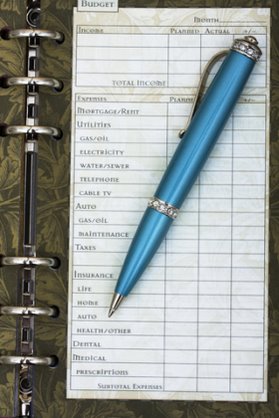How To Make A Budget In 7 Easy StepsHere are practical steps to help you know how to make a budget. It can seem overwhelming to know where to start. But with these seven easy steps, you will be on your way to creating a budget that works for you and gets you on the path to financial freedom. Step #1. Gather InformationGather all income and expense information that you have. This includes every bank statement, investment, pay stubs, etc.. . Step #2. Record Everything Start a journal and write down everything you spend for a month. Carry around a notebook and record every single transaction that you do in one months time. This will be enlightening and show you where all your money is going. There are a lot of costs that are hidden and every impulse buy that we do really can affect our bottom line. After gathering totals you can print off the Personal Budgeting Worksheet and enter all income and expenses as you have totals for the month. If a month isnt long enough to gather efficient totals. Then record for three months to get a better idea. Step #3. Fixed And Variable ExpensesTake a look now at what expenses are fixed and variable. There is a good reason to do this as it will be a key to changing your spending and budgeting goals. Fixed expensesFixed expenses are those that stay relatively the same each month and are required parts of your way of living. They included expenses such as your mortgage or rent, car payments, cable and/or internet service, trash pickup, credit card payments and so on. These expenses for the most part are essential yet not likely to change in the budget. Variable expensesVariable expenses are the type that will change from month to month and include items such as groceries, gasoline, entertainment, eating out and gifts to name a few. This is the category that is very important to look at, because it is what you can change and have the most control over. It will be a key element to changing your lifestyle and assist you in how to make a budget when you look at variable expenses. Step #4. Get The Facts And TotalsBased on the Personal Budgeting Worksheet, total your monthly income and monthly expenses. If your end result shows more income than expenses you are off to a good start! This means you can prioritize the excess to areas of your budget such as retirement savings or paying more on credit cards to eliminate that debt faster. If you are showing a higher expense column than income it means some changes will have to be made. Step #5. How To Make A Budget Change Where Needed
After totaling and seeing your results. Now go and see where you can make changes. Make adjustments to your variable expenses. Where can you cut back and where do you need more? For example: Maybe each month you are spending a lot on eating out, but don't even have the shoes you need for the kids. Look at needs versus wants. You will see that some areas will be out of hand as far as an amount. It will become very clear where all that money is going every month. The ultimate goal is to have no excess, and to have your total expense be equal to your total income, so all money is accounted for. Step #6. Make A Personal Budget PlanReview your budget monthly. It is important to review your budget on a regular basis to make sure you are staying on track. After the first month take a minute to sit down and compare the actual expenses versus what you had created in the budget. This will show you where you did well and where you may need to improve. Be patient with yourself and your family as you work on how to make a budget that works for your personal needs. It takes time to get it all figured out and to start new ways of thinking ans acting when you make a personal budget plan. Step #7. Start A Savings Account For Big Expenses.Now what about those things that come up that are big ticket items such as the family vacation or taxes, or Christmas presents? You will now want to start putting aside money each month for these things, so when the vacation comes you will have that money in your hand. This is easy when you use the Savings Account Worksheet. You will begin to put money into the savings account each payday, and allot money for the expenses that only come around quarterly, biannually, or annually. Instead of just putting a big lump of money in the bank every month and not knowing where it goes, you can assign money to different categories. This will help you stay disciplined to save regularly and so the money doesn't get spent where it shouldn't. This worksheet I designed has been a key tool for our family's budgeting success. You will want to print off 12 of the Savings Account Worksheets for each month of the year. Hopefully you now have a good handle on how to make a budget. Just follow the seven steps and you will be on your way to handling your money better than ever. Post a CommentDo you have a tip, suggestion or a story to add? Share it with us!   | | |
| | ||
| | ||
| | ||





